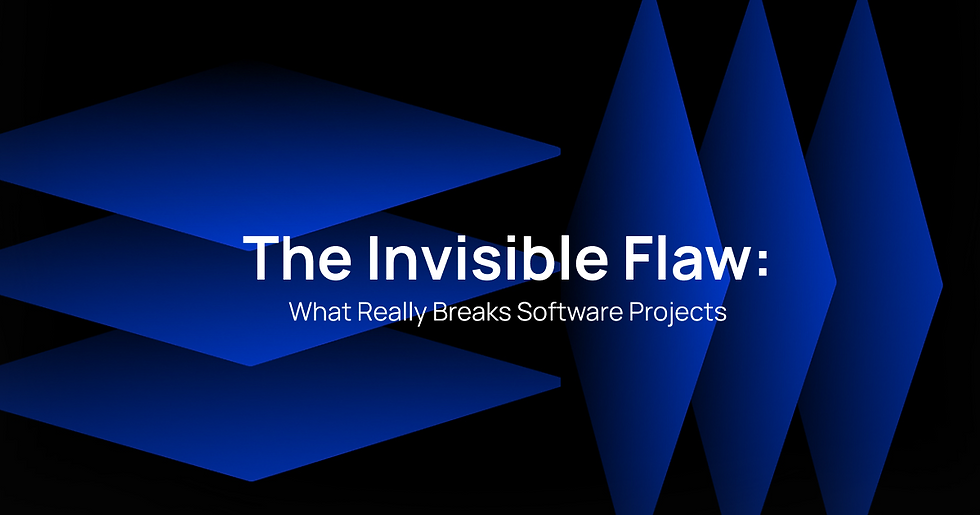Flexible Hiring Models for Engineering Teams: Staff Augmentation vs. Talent Hire
- kommit

- 19 hours ago
- 4 min read
Hiring engineers doesn’t have to be a drawn-out gamble. Traditional recruitment often involves long timelines, significant overhead, and uncertainty around team fit. So, is it possible to reduce that risk and move faster?
Two flexible hiring models are reshaping how engineering teams scale and adapt to changing project demands:
Staff Augmentation: Integrate experienced developers into your existing team for as long as needed, without the complexities of direct employment.
Talent Hire: Collaborate with engineers on real projects before deciding on long-term commitments.
Both approaches allow organizations to stay agile, control costs, and make more confident hiring decisions, without compromising on quality.
Why flexible hiring matters for engineering teams?
Recent data shows how much is at stake when hiring goes wrong:

But what if you could reduce that risk? What if you could access specialized talent faster, with more flexibility, and without the full commitment of a traditional permanent hire?
We'll break down two effective flexible hiring models:
Staff Augmentation: Highly specialized talent for skill gaps and specific projects.
Talent Hire: Trial periods for qualified engineers before permanent commitment.
Let’s explore when each model makes sense, how they differ, and provide a simple framework to help you choose the right approach for your company. If you’re looking for a tailored consultancy for your team or organization, click the button below.
Staff Augmentation for Engineering Teams
Staff Augmentation is a way to scale your engineering teams with experienced developers, without adding to your payroll or navigating a full hiring cycle.
With this model, engineers become part of your day-to-day team. They join your processes, attend your standups, and collaborate like internal team members. The key difference? You don’t handle the employment side-contracts, payroll, benefits, and compliance.
You get long-term support, without long-term paperwork.

And most importantly: engineers stay with you as long as you need them. Some companies have worked with the same augmented team for years.
When to Use Staff Augmentation
Staff Augmentation works well in many scenarios, especially when you want to move fast without growing your internal headcount.
You need more hands on deck: Your internal team is at capacity, but hiring full-time isn't an option right now.
You want flexibility in team size: Scale up during busy seasons and scale down when things stabilize, without layoffs or hiring freezes.
You’re looking for specific skills: Bring in engineers with niche expertise (like DevOps, mobile, or data engineering) to complement your team.
You need long-term support, without the admin load: Maintain continuity with engineers embedded in your team, without the burden of managing administrative tasks.
Staff Augmentation isn’t just for short-term projects, it’s a flexible, long-term partnership that adapts to your pace.
Let’s talk about Talent Hire
Talent Hire is another approach designed to help you build your permanent engineering team, without the risks that come from hiring based on interviews alone.
Instead of making a long-term commitment upfront, you start by working with a vetted engineer on real projects. This gives you the space to assess how they solve problems, communicate with your team, and fit your culture. If it’s a match, you can bring them on board permanently. If not, you can part ways with no strings attached.
It’s hiring based on actual collaboration, not just first impressions.
How It Works
We source the right fit: Through a rigorous vetting process, we connect you with engineers ready to contribute from day one.
You work together, for real: The engineer joins your team for a trial period—typically 3 to 6 months—working on real projects, in your actual environment.
You evaluate performance and fit: See how they resolve problems, code, and collaborate before making a decision.
You choose the next step: If it’s the right match, you hire them directly after the trial period. If you’re not ready to make a permanent decision yet, you can keep working with the engineer under the same model and choose to hire them later — Talent Hire is flexible.
This approach helps you hire with confidence. No guesswork, no rushed decisions.
When to Use Talent Hire
Talent Hire makes the most sense when you’re building a permanent team and want to reduce the risk of a bad hire.
You’re filling a critical role: For senior or strategic positions, cultural fit and leadership style matter just as much as technical skills.
You want proof before commitment: Talent Hire lets you see how someone performs under real conditions before offering a full-time role.
You’re creating a new role: If the position is new, this model gives you space to refine responsibilities while evaluating the engineer.
You want to minimize hiring mistakes: With 75% of companies reporting bad hires last year, testing the fit first can save time, money, and team friction.
Making Smarter Hiring Decisions
Traditional hiring isn’t your only option—and in many cases, it’s not the most efficient one. The costs of a bad choice can reach up to 30% of a new employee’s first-year salary; the stakes are high. But there are smarter, more flexible ways to build great teams.
Staff Augmentation gives you long-term, embedded support without the burden of direct employment.Talent Hire helps you validate fit before making a permanent commitment.
Both models reduce risk, save time, and give you access to highly skilled engineers ready to contribute from day one.
What’s Next?
Every team is different—and so is every hiring need.
If you’re still deciding which model fits best, or you’d like to explore how these approaches could work for your company, we’re here to help.
Sources:
CareerBuilder. "Prevent Hiring the Wrong Person." CareerBuilder Resources, accessed 2024.
Robert Half. "Workplace Trends of 2024, Predictions for 2025." Robert Half Research & Advisory, 2024.
Apollo Technical. "The Cost Of A Bad Hire And Red Flags to Avoid (2025)." Apollo Technical LLC, l 2025.





Comments